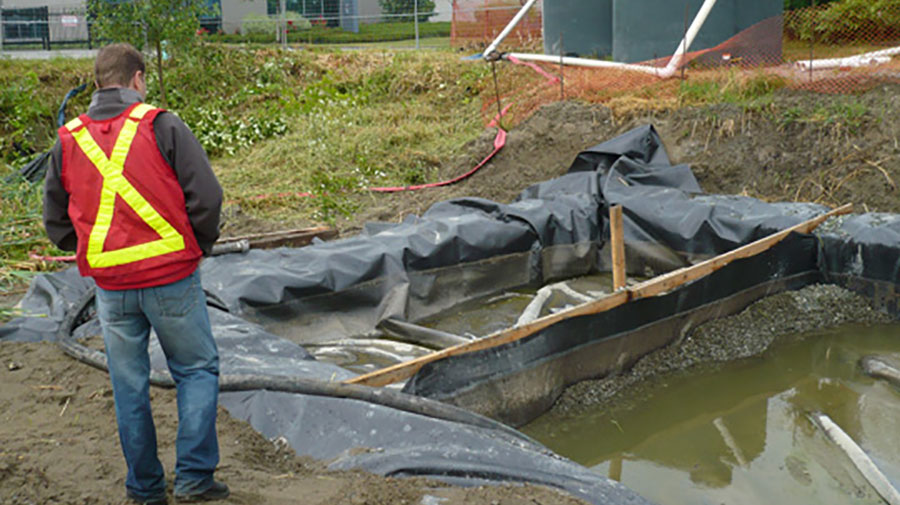
A method that I've used on a few sites is the use of above-ground, vertical, plastic storage tanks. They range from a 305 to a 10,000 gallon capacity and can be used as an alternative to sediment ponds on smaller-sized sites that don't have room to accommodate a sediment pond, or would rather avoid the costs associated with the construction and decommissioning of large sediment ponds.
A small catchment area or sump is dug at the low point of site, and water is pumped from there into the storage tanks.
Depending on water volume calculations for the site: you can install one, two, or more tanks connected with an overflow pipe from one tank to the other, and have a small discharge orifice from the last tank.
The storage tanks create some detention time; however, offer no water filtration. The tanks work perfectly when combined with an open swale which leads to a discharge pipe.
The swale contains check dams with sand features to help back the water up, and allow some filtration prior to discharge. The check dams with sand placed on the upstream side of the check dam act as a coffee filter - allowing the water to trickle through while filtering out the fines on the way through.
If you require a lot of filtration, make the swale longer with more check dams and sand. If the water is discharging clear already, then you can shorten the swale length.
This method, once accepted, will likley eliminate (or at a bare minimum) reduce the size of the current sediment ponds being installed on sites today. As a bonus, once you've completed your site works, you can remove the plastic tanks, and use them on your next job - which you can't do with a sediment pond.